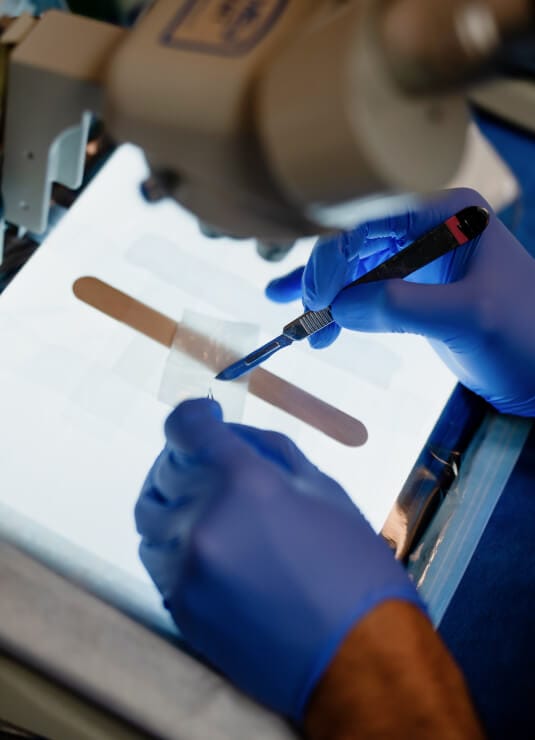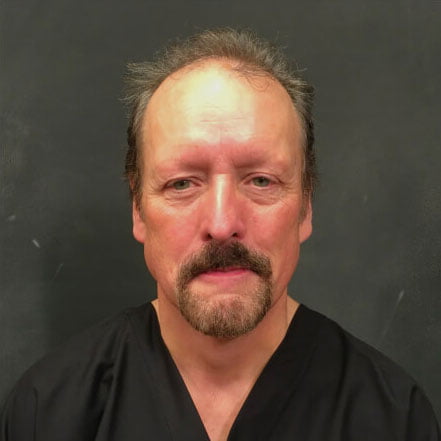
African-American Hair Transplant Seattle | Dr Javad Sajan
Tightly coiled curls aren’t just hair, they’re heritage. And heritage demands expert care. Every curve of a textured follicle follows its own path beneath the skin, and only a team experienced with those patterns can protect both the curl and the culture it represents.
In our Seattle hair transplant clinic, each transplant plan begins with microscopic mapping of your hair’s unique angles and densities. By adjusting the punch size, extraction angle, and implantation depth to match the precise geometry of curly follicles, we minimize transection, protect scalp health, and achieve authentic-looking density that grows, bends, and blends easily with the rest of your hair.
Why African-American Hair Is Different
Curly, tightly spiraled follicles give Black hair its striking volume, but those same curves add a layer of surgical complexity for African-American Hair Transplant. Understanding the unique biology below the scalp is the first step toward achieving natural-looking density with minimal risk.
- Curved root path: Spiraled follicles sit at sharp angles, so extraction must be slow and gentle.
- Density illusion: Up to 30 % fewer follicles per cm², yet curls amplify coverage—strategy matters more than graft count.
- Thicker, elliptical shafts: Wider strands disguise thinning but need custom punch sizes to prevent damage.
- Slower growth, longer life: 0.7–0.9 cm/month growth rate, balanced by an extended anagen phase for lasting fullness.
What Causes Hair Loss in African-American Patients
Hair Loss in African-American patients typically develops due to a combination of factors, including a mix of inherited hormones, daily styling habits, and scalp-level inflammation. Let’s have a look at them:
Androgenetic (Hereditary) Thinning
Dihydrotestosterone (DHT) gradually miniaturizes follicles, shortening the growth phase until strands become vellus or vanish. About 60 % of men and up to 35 % of women of African descent notice some hereditary thinning by age 50. [1]
Traction Alopecia From Styling Practices
Tight braids, sew-in weaves, locs, or slick ponytails place continuous tension on follicles, causing inflammation and scarring. One dermatology survey found traction alopecia in 31 % of African-American women versus 2 % of other groups. [2]
Central Centrifugal Cicatricial Alopecia (CCCA)
A scarring process that begins at the crown and radiates outward. Heat styling, chemical relaxers, and autoimmune tendencies may contribute; once scar tissue forms, follicles cannot regenerate without surgery. [3]

Lifestyle and Medical Triggers
- Nutrient gaps (iron, vitamin D)
- Hormonal shifts (postpartum, thyroid disease)
- Chronic stress and inflammatory scalp disorders
Are You a Candidate For African American Hair Transplant?
Not every form of hair thinning requires surgery, and not every scalp is suitable for grafting on the first day. A focused evaluation helps us determine whether transplantation will deliver durable, natural results or whether a medical approach should come first.
- Donor-area density: We look for follicles in the donor zone — curly hair can achieve good coverage with slightly fewer because each graft provides more visual bulk.
- Curl architecture: Consistent S- or C-shaped follicle paths are easier to extract intact; wildly variable curls may need extra planning or larger punch sizes.
- Scalp health: Active dermatitis, psoriasis, or widespread scarring must be treated before surgery to protect graft survival.
- Keloid tendency: If you form thick scars easily, we’ll discuss closure techniques or non-surgical options to avoid raised scarring.
- Systemic factors: Balanced thyroid function, adequate iron, and normal hormone levels boost post-op growth; we’ll order bloodwork to confirm.

Men vs Women- Tailored Approaches
Curly, densely pigmented hair behaves differently on male and female scalps because of variations in hormone patterns, styling habits, and aesthetic goals. We customize each plan to maximize density and preserve natural curl shape.
For Men
- Precision hairline that suits facial angles
- Graft priority at temples and crown
- Wider curved punches (≈1 mm) protect curled follicles
For Women
- Soft hairline lowering or temple fill
- Strategic spacing keeps natural curl lift
- Minimal shaving for discreet recovery
For Non-Binary / Transgender Patients
- Plans integrate hormone status and personal style—no assumptions, just individualized goals.
Our Techniques
No single method suits every curl pattern or coverage goal. That’s why we have three harvesting systems, which are tailored to your follicle shape, scalp health, and density targets.
Follicular Unit Extraction (FUE)
Using wider, curved punches that follow the natural coil beneath the skin, FUE lifts follicles intact and scatters tiny dots across the donor zone—hard to detect even with close fades. Healing is quick, and most patients feel comfortable in public within a week.
Follicular Unit Transplantation (FUT)
When large graft counts are needed, FUT removes a thin strip that our surgeons close with plastic surgery techniques to minimize scarring on darker skin. It delivers dense coverage for extensive crown work, provided you’re willing to keep the back and sides at least a centimeter long.
Direct Hair Implantation (DHI / Choi Pen)
With the Choi implanter pen, each follicle is placed at the exact curl angle in a single motion, making it ideal for meticulous hairline work and high-density temple filling. Reduced handling time and precise depth control help the grafts settle quickly and grow with their natural curve intact.
Procedure Day & Recovery Timeline
Your surgery is performed in a single day, under local anesthetic, with breaks for meals and stretching. Most of our patients stream music or watch movies while we work.
Day 0–1
The donor zone is tender but numb; tiny crusts form around each graft. Sleep with your head elevated and use the saline spray we provide every hour to keep grafts hydrated.
Day 2–7
Mild swelling may migrate to the forehead before subsiding. Crusts flake away naturally; you begin gentle shampooing on day three. By the end of the week, most people feel comfortable returning to desk work or light errands.
Month 1–3
Transplanted hairs shed—this is normal “shock loss.” Follicles rest beneath the skin while new shafts begin forming.
Month 4–6
Early sprouts emerge, soft and fine at first, then thicken and adopt their original curl pattern. You can resume protective styling and low-heat tools.
Month 9–12 +
Density builds, curl definition sharpens, and the hairline blends seamlessly with surrounding growth. Final photos are typically taken at the 12-month visit.
Transparent Pricing & Financing
The price depends on graft count, technique (FUE, FUT, or DHI), and whether adjunct treatments such as PRP are bundled into the same session. We provide a written quote after your microscopic evaluation, outlining every line item—no surprise fees on surgery day. Flexible options include zero-interest payment plans, extended-term financing, and health-care credit programs, so you can move forward on a timeline that fits both your hair goals and budget comfort.
Still Have Questions? — Talk With Our Hair-Restoration Expert
Choosing surgery is a big decision, and reading online can take you only so far. A one-on-one consultation allows you to view microscopic images of your own follicles, map out coverage in 3D, and leave with an exact plan—surgical, medical, or a combination of both.
Call (206) 209 -0988 or click here to schedule your complimentary evaluation. Virtual video appointments are available for out-of-town patients, and every consultation includes a written quote and personalized after-care roadmap.
FAQs
Q: Am I too young or too old for a transplant?
Candidacy is judged more by the stability of your hair-loss pattern than by age alone. Most clinics prefer patients over 25, but we have safely treated individuals in their 60s and 70s when donor density is still strong.
Q: What advantages do curly, densely pigmented strands offer in transplantation?
Each graft provides greater visual coverage because the curl blooms outward, allowing fewer follicles to create the impression of thicker hair compared to straight strands.
Q: Is FUE or FUT the better option for my hair type?
FUE is favored for its small dot scars and curved punches that protect coiled follicles, while FUT can harvest larger graft counts for advanced thinning. Technique choice depends on your donor density, styling preferences, and the desired haircut length after surgery.
Q: Do hair transplants work on African-American hair?
Absolutely—when performed with curl-specific tools and angles, transplanted follicles grow with the same texture, density, and curl pattern as before. The key is using curved punches, low-torque extraction, and precise placement to avoid transection or follicle distortion.
Q: What is the success rate of hair transplant for Black men?
In experienced hands, graft survival rates average 90–95%. Our clinic’s documented rate is above 94%, measured at the one-year mark when final density and curl definition have fully matured.


